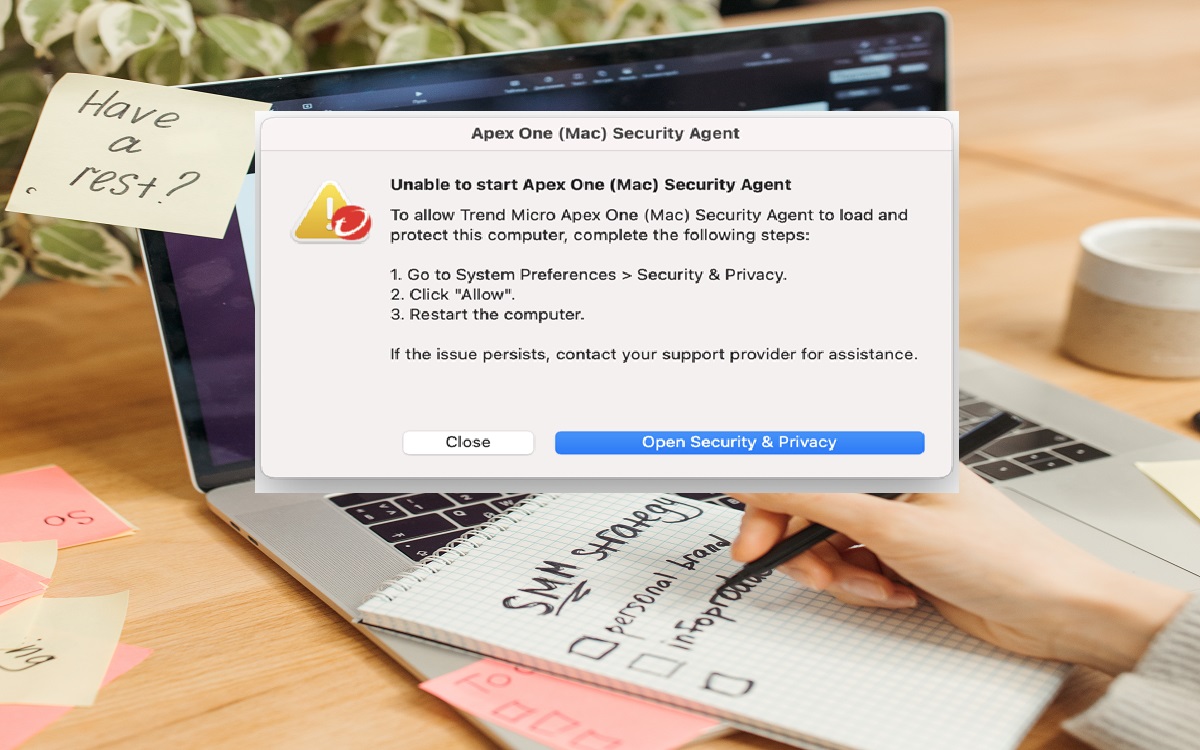Seeing the error “Unrecoverable Error Security Agent was unable to create requested mechanism TeamViewerAuthPlugin:start” pop up on your Mac can be worrying. This error typically appears when trying to use remote access software like TeamViewer and indicates an issue with macOS’ SecurityAgent component.
Don’t panic – in most cases this error can be fixed with a few troubleshooting steps. Here are some methods to try to resolve the TeamViewerAuthPlugin error on your Mac.
Recent Released:How To Fix MAC Error VolOnLinErr Drive Volume already on-line at MountVol
1. Boot into Recovery Mode and Repair Disk
One of the first things to try is booting your Mac into macOS Recovery mode and using Disk Utility to check for disk errors. Follow these steps:
- Shut down your Mac completely.
- Press and hold the Command (⌘) + R keys immediately after pressing the power button to boot into Recovery mode.
- When the Recovery screen appears, select Disk Utility.
- Choose your main system drive volume in the sidebar.
- Click First Aid and let Disk Utility scan and repair any errors.
This can fix various filesystem problems that may be causing issues with SecurityAgent. Once done, restart your Mac normally and try using the software again to see if the error persists.
2. Reinstall/Update SecurityAgent Files
The TeamViewerAuthPlugin that the error refers to is a component file within macOS’s SecurityAgent framework. If this file gets corrupted or goes missing, it can cause the error.
You may be able to resolve the issue by reinstalling the SecurityAgent files:
- Download the macOS Combined Security Update for your version from Apple’s support site. This contains the required SecurityAgent file updates.
- Install the update and restart your Mac.
Alternatively, you can try downloading just the TeamViewerAuthPlugin.bundle file separately if you can find a copy of it online. Just make sure the version matches the macOS build you are running.
3. Delete the Auth.db File
The auth.db file stores authorization information for SecurityAgent. Deleting this database file can reset the permissions and often resolves quirky authorization issues like the TeamViewer error.
To delete auth.db:
- Boot into Recovery mode and launch Terminal from the Utilities menu.
- Type the following command:
Copy code
rm -rf “/Volumes/Macintosh HD/var/db/auth.db”
- Restart your Mac normally afterwards.
This will force macOS to regenerate the database with proper permissions, potentially fixing the problem.
4. Reinstall macOS
If all else fails, you may need to perform a clean reinstall of your Mac’s system software:
- Back up your Mac’s data to an external drive.
- Boot into Recovery mode.
- Launch Disk Utility and erase/format the disk drive.
- Quit Disk Utility and choose Reinstall macOS from the main Recovery screen.
- Follow the onscreen prompts to install a fresh copy of your Mac’s operating system.
This will reset all system files and settings, resolving any corruption that may be causing the TeamViewer error. You can then restore your apps and data from the backup.
What Causes This Error?
The “Unrecoverable Error Security Agent” message appears when macOS’s security framework known as SecurityAgent encounters a problem.
Some common causes include:
- Corrupted or missing SecurityAgent plugin files like TeamViewerAuthPlugin.bundle.
- Damaged system files from a partially failed macOS update.
- Permissions issues on critical SecurityAgent directories or files.
- Incompatible or broken third party kernel extensions.
- Disk errors causing System file corruption.
So in most cases, the error indicates an underlying problem with system files, filesystem permissions, or disk integrity rather than a specific problem with TeamViewer itself.
Tips to Prevent the Error
Here are some tips to avoid the SecurityAgent error from occurring in the future:
- Keep your Mac’s OS up to date with the latest security patches and updates.
- Don’t interrupt system updates or shutdowns before they complete.
- Use reputable apps and plugins – avoid pirated or hacked software.
- Only install trusted kernel extensions/drivers compatible with your OS version.
- Don’t modify any root-level System folders or files manually.
- Regularly backup your Mac so you always have a clean restore point.
- Run Disk Utility First Aid regularly to fix disk errors proactively.
- Use a reliable antivirus program to detect and remove malware.
Following best practices like these will help prevent the system file corruption or permission issues that typically cause this error.
When to Seek Professional Help
If you still cannot resolve the TeamViewer error after exhausting all troubleshooting steps, it’s best to seek assistance from a qualified Mac technician, Apple Genius or authorized service provider.
Some cases where professional help is advisable:
- The error persists after reinstalling macOS and trying all recommended fixes.
- You experience recurring kernel panics or freeze-ups.
- Disk Utility finds filesystem damage it cannot repair.
- You observe other unusual behavior indicating hardware or firmware issues.
- You are not comfortable performing advanced troubleshooting steps on your own.
macOS experts have additional tools and experience to diagnose and pinpoint stubborn system problems. Seeking professional assistance can save you time and ensure the problem gets fully resolved.
Conclusion
The “Unrecoverable Error Security Agent TeamViewerAuthPlugin” alert may look concerning but in most instances can be fixed with straightforward troubleshooting. Start with simpler steps like repairs in Recovery mode, reinstalling security updates and deleting auth.db before trying a full macOS reinstallation. Ensure your system and data is backed up before making any repairs. For recurring or persistent issues, seek assistance from an Apple professional. Following best practices for macOS maintenance can help avoid these frustrating errors occurring down the road.
Summary of Fixes:
- Boot into Recovery mode and run First Aid with Disk Utility.
- Reinstall/update the SecurityAgent files.
- Delete the corrupted auth.db file.
- Clean reinstall macOS as a last resort.


